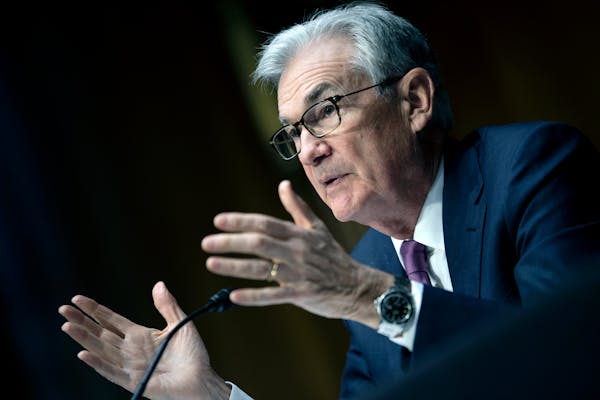Minnesota's economy gained speed over the summer after a sluggish midyear.
The state's real gross domestic product (GDP), which measures the total value of goods and services produced, rose 4.1% on an annualized basis in the third quarter after ticking up less than 1% in the second quarter, the U.S. Bureau of Economic Analysis reported Friday.
Other states experienced a similar boost in July through September, reflecting a nationwide surge driven by strong consumer spending despite prolonged inflation and higher interest rates. While real second-quarter GDP declined in six states, including neighboring Wisconsin, it rose in the third quarter in all 50 states and jumped 4.9% nationally.
Minnesota's growth tends to fall in the middle of the pack in the U.S. and the Plains region. South Dakota, Nebraska and Kansas all experienced higher third-quarter growth, with sizable gains in agriculture — a sector where Minnesota saw a decline.
"You can have bumpiness at the state level in how some of these sector-specific things are reported," said Tyler Schipper, an associate economics professor at the University of St. Thomas. "I wouldn't necessarily look at this report and say, 'Oh, Kansas and Nebraska are regional powerhouses compared to Minnesota' because of two above-average quarters."
Minnesota's economic output outpaced the U.S. in the first quarter, with a 2.2% increase driven by agriculture, retail and construction.
Personal income also rose in the third quarter, the Bureau of Economic Analysis reported, with a $195.3 billion quarter-over-quarter increase nationwide. Minnesota added about $3 billion in personal income in the second quarter, a 3% increase compared with 3.5% nationally.
Still, Minnesota's hourly wages and job growth are outpacing the U.S. as a whole. The state Department of Employment and Economic Development reported Thursday that the average hourly wage in Minnesota reached $36.29 in November, more than $2 higher than the national average. Minnesota added 9,500 jobs from October to November, a 0.3% uptick compared with 0.1% nationally.
The U.S. labor market has softened as the Federal Reserve has raised interest rates to combat high inflation, but unemployment has remained unexpectedly low. The national jobless rate has held below 4% for 22 months, the longest stretch in half a century, and Minnesota's rate has stayed even lower.
"Minnesota is an economy that tends to do pretty well and is highly diversified," Schipper said, "even if it's not growing as rapidly as other places in the country."
New York City turns to AI-powered scanners in push to keep guns out of the subway system
North Carolina regulators says nonprofit run by lieutenant governor's wife owes the state $132K

